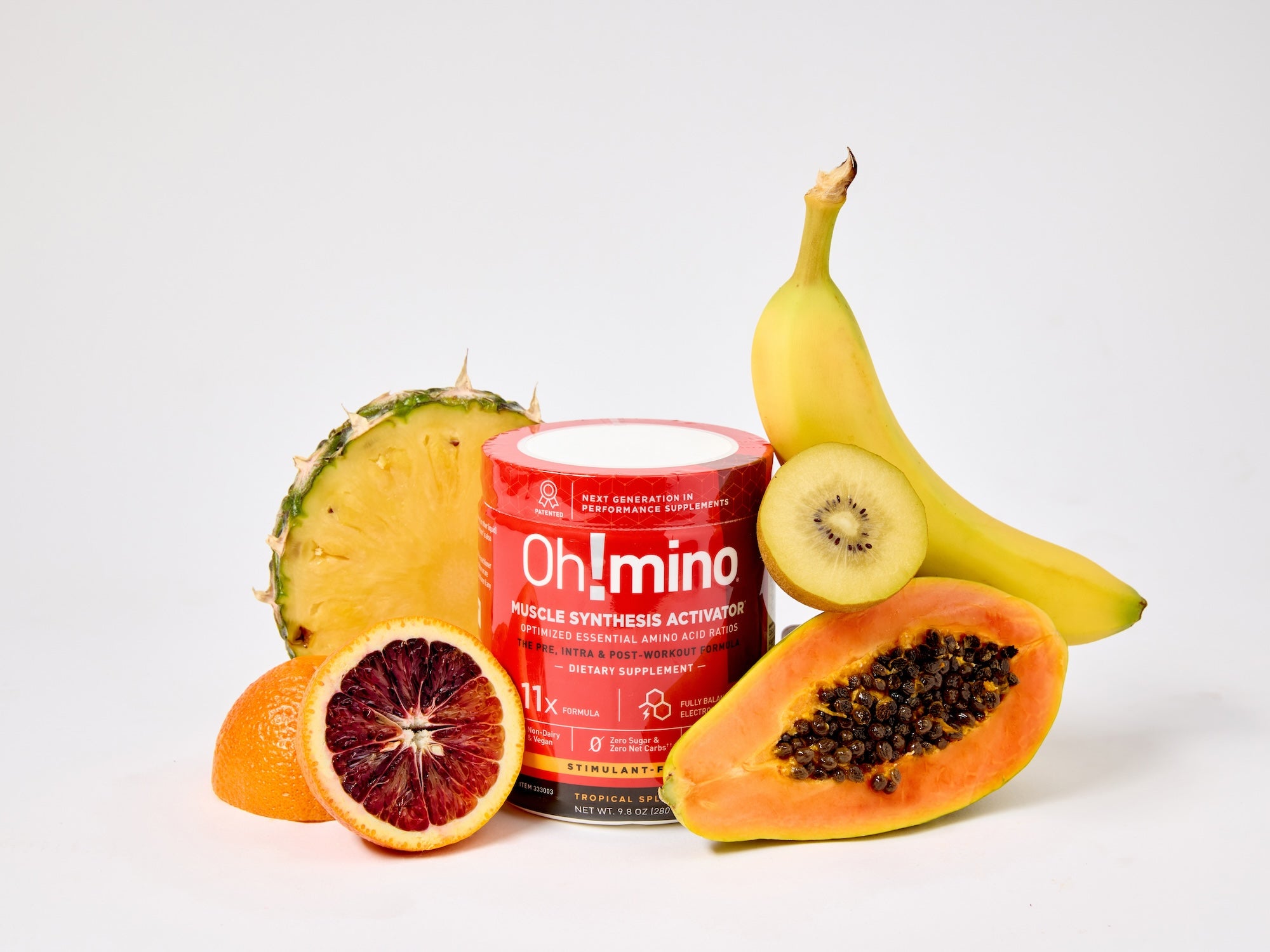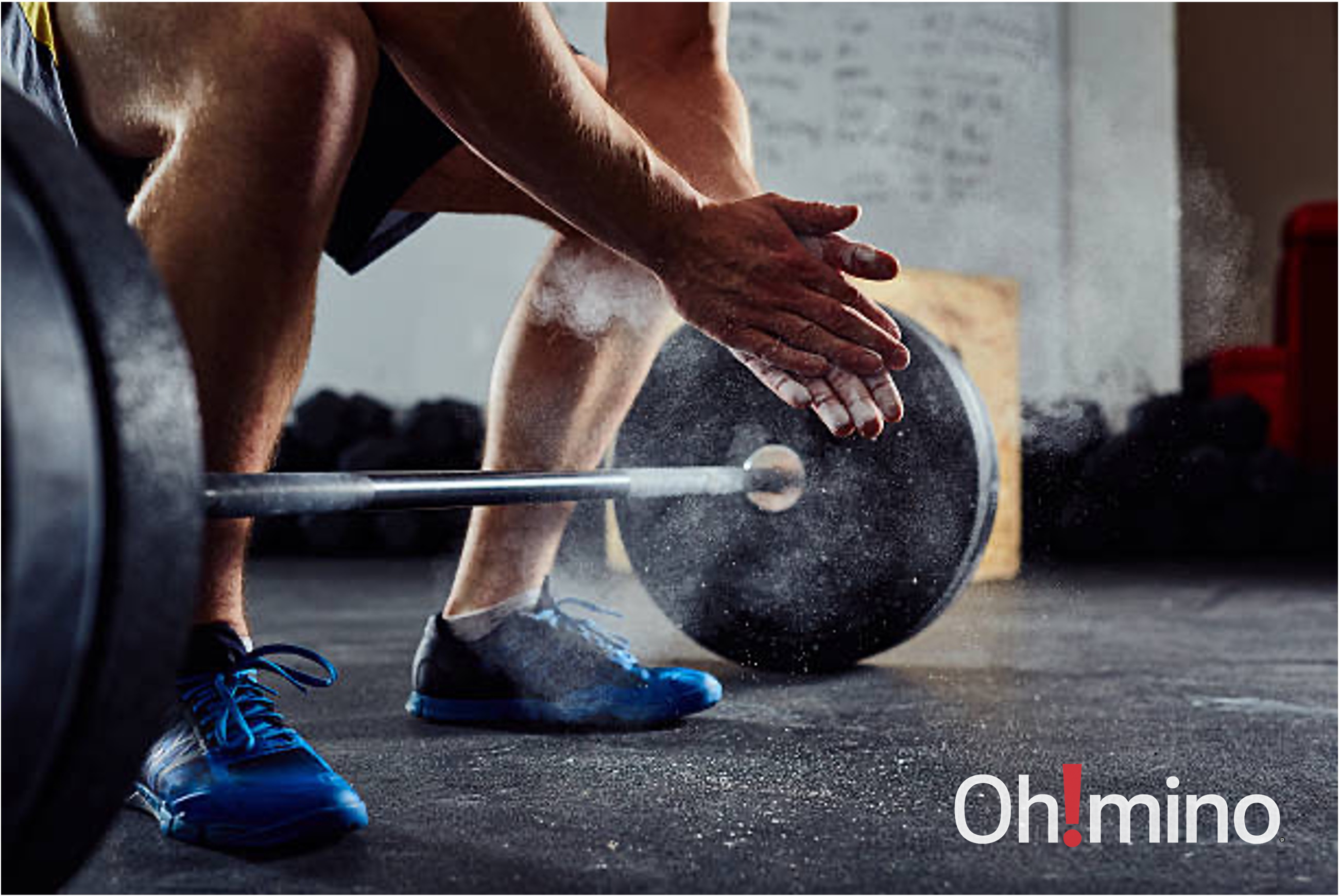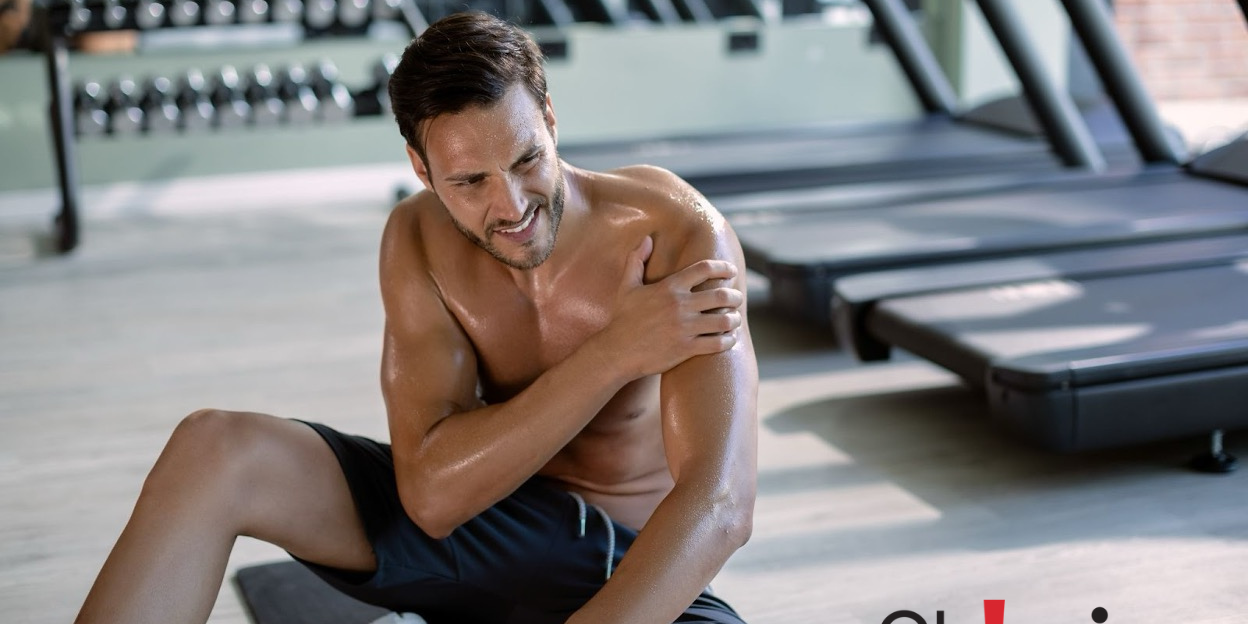Key Takeaways
-
The cardinal rule of lifting is prioritizing proper form over lifting heavy weights to maximize results and prevent injury.
-
Poor lifting technique is the leading cause of weightlifting injuries, with 60% of gym-related injuries stemming from improper form.
-
Core bracing, neutral spine positioning, and proper breathing are the foundation of safe and effective lifting technique.
-
Progressive overload should only be implemented when perfect form can be maintained with your current weights.
-
Oh!mino© Muscle Synthesis Activator supports your lifting journey. Our comprehensive amino acid formula with 9 essential amino acids and electrolytes enhances muscle recovery, reduces soreness, and supports hydration during intense training sessions.
Form Over Weight: The True Cardinal Rule of Lifting
The cardinal rule of lifting is simple yet profound: proper form always takes precedence over the amount of weight lifted. This principle isn't just about safety, though that's a major component; it's to make sure your workout is actually effective. When you lift with correct form, you ensure that the targeted muscles receive optimal stimulation while minimizing stress on joints and connective tissues. The moment your form breaks down, you're no longer performing the exercise as intended, and you risk both injury and reduced results.
Many beginners (and even experienced lifters) fall into the trap of ego lifting, putting too much weight on the bar and sacrificing form to move it. This approach might temporarily boost your gym confidence, but it's a guaranteed path to plateaus, frustration, and potential injury.
Remember: nobody cares how much you lift except you. What matters is how effectively you're training your body.
|
Oh!mino: Elevate Your Performance. Accelerate Your Recovery. Science-Backed Superiority for Every Fitness Journey Power Your Goals with Proven Results:
The Oh!mino Advantage: ✓ Patented formula that’s 11x more effective than protein, 20x more effective than BCAAs Choose Your Perfect Formula: Available in refreshing Tropical Slash or Berry Blast flavors, with stimulant-free or caffeinated options. Prefer capsules? We've got you covered with the same powerful formula. Take before, during, or after training—one solution for your entire workout. |
How Poor Form Cause Injury
Studies show that improper technique is one of the primary causes of weightlifting injuries, with a lot of gym-related injuries stemming from poor form rather than excessive weight itself.
Poor lifting technique creates both immediate and cumulative damage to your body's structures. In the short term, a single rep with severely compromised form can cause acute injuries like muscle tears, ligament sprains, or even disc herniations. But perhaps more concerning is the gradual wear and tear that occurs from consistently using suboptimal form with moderate weights.
-
Excessive spinal flexion during deadlifts creates shearing forces on intervertebral discs
-
Poor shoulder positioning during bench press can lead to labrum tears and rotator cuff damage
-
Knee valgus (knees collapsing inward) during squats places dangerous stress on ligaments
-
Hyperextended wrists during curls or presses can cause carpal tunnel syndrome
-
Cervical strain from improper head position can trigger headaches and nerve issues
These technical errors might not cause immediate pain, but they create microtrauma that accumulates over time. Many chronic lifting injuries don't announce themselves until significant damage has already occurred. By then, recovery often requires extended time away from training, a frustrating setback that could have been prevented by simply respecting the cardinal rule.
Best Form for Various Strength Training Exercises
Squat Setup
Proper squat setup begins before you even unrack the bar.
Position yourself under the bar with your feet shoulder-width apart and the bar resting comfortably across your upper back (not on your neck). For high-bar squats, the bar should rest on your trapezius muscles; for low-bar, it sits slightly lower across your posterior deltoids. Your hands should grip the bar just outside shoulder width, creating a stable shelf with your upper back by squeezing your shoulder blades together.
When unracking the weight, stand up fully with the bar before stepping back. Take two controlled steps backward, one foot then the other, to establish your squat stance. Your feet should be positioned slightly wider than shoulder-width apart with toes pointed slightly outward (about 15–30 degrees).
This angle allows proper knee tracking over the toes during the movement. Before descending, take a deep breath into your belly, brace your core by contracting your abdominals as if preparing to take a punch, and maintain a neutral spine position. At the bottom position, drive through your heels and midfoot (not your toes) to push yourself back to the starting position while maintaining tension throughout your core and back.
Deadlift Mechanics
The deadlift is often called the king of all exercises, but it's also one that demands perfect form.
Begin with feet hip-width apart, with the barbell positioned over the middle of your foot (not the toes). Hinge at the hips to reach down and grip the bar just outside your legs, using either a double overhand or mixed grip. Your shoulders should be slightly in front of the bar, with arms straight and hips higher than knees but lower than shoulders.
Take a deep breath, engage your lats by "pulling the slack out of the bar" before the actual lift begins, and then drive through your heels by pushing the floor away from you rather than thinking about pulling the weight up. Keep the bar close to your body throughout the entire movement, and finish by squeezing your glutes at the top without hyperextending your back.
Bench Press Position
The bench press requires more setup than most lifters realize.
Begin by lying on the bench with your eyes directly under the bar. Establish three points of contact: your head, upper back/shoulders, and glutes, all of which should be firmly planted on the bench. Your feet should be flat on the floor with knees at approximately 90 degrees.
Grip the bar with hands slightly wider than shoulder-width apart, wrapping your thumbs around the bar for safety. When lowering the weight, think about "pulling" the bar to your lower chest (around the nipple line), keeping your elbows at about a 45-degree angle to your torso, not flared out to 90 degrees.
Touch the bar to your chest lightly without bouncing, then press the weight back up in a slightly diagonal path toward your face, ending with the bar directly over your shoulders. Throughout the movement, maintain full body tension by keeping your core braced, glutes engaged, and feet pressed firmly into the floor.
Overhead Press Safety
The overhead press demands exceptional shoulder mobility and stability.
Start with your feet hip-width apart and the bar resting on your front deltoids at the collarbone level. Your grip should be just outside shoulder width with elbows pointing downward. Before pressing, create full-body tension by bracing your core and slightly squeezing your glutes. As you press the weight upward, move your head backward slightly to allow the bar to travel in a straight vertical line, then bring your head forward once the bar clears your face.
At the top position, the bar should be directly over your shoulders and midfoot, with arms fully extended but elbows soft (not locked). Lower the weight under control, moving your head backward again to allow the bar to travel straight down. Never arch your lower back excessively during this lift; this compensation pattern puts tremendous stress on your lumbar spine and indicates you're using too much weight.
Tools to Check Your Form
Video Analysis
Video analysis is the gold standard for form assessment. Set up your smartphone on a tripod or stable surface and record your working sets from multiple angles: side view for squats and deadlifts to check depth and back position, front view to assess knee tracking and symmetry, and 45-degree angles to catch rotational issues.
When reviewing footage, watch at both normal and reduced speeds to catch subtle form breakdowns that might not be apparent in real time. This personalized feedback becomes invaluable as you progress, helping you recognize patterns in your lifting mechanics that need refinement.
Working With Spotters
A knowledgeable training partner provides real-time feedback that no technology can match. Beyond just ensuring safety, a good spotter watches your technique with a critical eye, offering immediate cues when form starts to break down.
The key is finding spotters who understand proper mechanics and can communicate effectively during your lift without being distracting. Establish clear expectations with your spotter beforehand; explain which specific aspects of your form you want them to monitor and what verbal cues help you make corrections mid-set.
Mirror Technique
Mirrors can be both helpful and problematic for form checks. They're most valuable for beginners learning initial movement patterns or for checking setup positions before a lift begins. Use mirrors strategically to verify your starting position, bar placement, and limb alignment before initiating the movement.
However, be cautious about relying exclusively on mirrors during dynamic movements; constantly turning your head to check form in a mirror can itself create technique problems, especially for exercises requiring a stable neck position like squats and deadlifts.
Building Your Lifting Foundation
Before chasing impressive numbers on complex movements, invest time in developing fundamental movement patterns and body awareness. This foundation-first approach might seem slow initially, but it creates exponential returns as you progress.
Consider working with a qualified coach during this foundational period. A professional eye can catch subtle movement faults before they become ingrained habits, potentially saving you years of frustration trying to unlearn faulty patterns later. If personal coaching isn't accessible, use technology through form check groups online or remote coaching services.
The investment in technical mastery early in your lifting journey yields the highest return on investment of any training variable. As the saying goes, "First learn form, then gradually increase intensity."
Mastering the Cardinal Rule: Oh!mino©'s Guide to Lifting Excellence
Your commitment to perfect form deserves nutritional support that matches your dedication. Try our Oh!mino Muscle Synthesis Activator to gain strength, build muscles, and recover faster!
Oh!mino© Muscle Synthesis Activator delivers a patented blend of L-Leucine, L-Lysine, L-Threonine, L-Valine, L-Phenylalanine, L-Histidine, L-Isoleucine, L-Tryptophan, and L-Methionine (in addition to the only semi-essential amino acid, Glycine) that works synergistically to enhance muscle protein synthesis, reduce post-workout soreness, and accelerate recovery between sessions.
The balanced electrolyte profile makes sure you stay hydrated during intense training, supporting your ability to maintain proper form even during challenging sets. Simply mix 1–2 scoops with 8–12 oz of water and have it before, during, and after your workouts to fuel your muscles with the building blocks they need for growth and repair.
Your future self will thank you for the patience and discipline you show today. By honoring the cardinal rule of lifting and supporting your efforts with quality nutrition, you're building a foundation for lifelong fitness success.
The choice between impressive gym videos and impressive long-term results is yours to make, but we know which path leads to true greatness.
Try Oh!mino© Muscle Synthesis Activator today!
Frequently Asked Questions
Is it normal to feel muscle soreness after lifting?
Delayed onset muscle soreness (DOMS) is a normal response to new or increased training stimuli, typically peaking 24–72 hours after your workout. Mild to moderate soreness indicates that you've challenged your muscles, but extreme soreness that significantly impairs movement or lasts beyond 3–4 days suggests you may have pushed too hard. As your body adapts to consistent training, you'll likely experience less severe soreness even as you continue to make progress.
How often should I increase the weight I'm lifting?
Weight progression should follow the principle of "as slowly as necessary, but as quickly as possible while maintaining perfect form." For beginners, this might mean adding weight weekly on main lifts. As you advance to intermediate and advanced stages, these jumps become less frequent, perhaps biweekly, monthly, or even less often for very experienced lifters. The key indicator that you're ready to increase weight isn't just completing all prescribed reps but completing them with technical excellence and sufficient reserve capacity.
Should I lift until muscle failure every workout?
Training to technical failure (the point where form begins to break down) should be avoided in most training scenarios, especially for compound movements. Training to muscular failure (absolute inability to complete another rep even with form breakdown) carries even greater risk with minimal additional benefit. Research shows that stopping 1–3 reps short of failure, known as leaving "reps in reserve" (RIR), produces comparable muscle and strength gains while significantly reducing injury risk, nervous system fatigue, and recovery demands.
Do I need a spotter for every exercise?
Spotters are essential for certain exercises but unnecessary for others. Bench presses, squats with a barbell on your back, and overhead pressing movements benefit most from competent spotting, especially when working with challenging weights. However, exercises performed in a power rack with safety pins/bars, deadlifts, most dumbbell work, and machine exercises can be performed safely without a spotter if proper setup and execution are maintained.
How can Oh!mino©'s Muscle Synthesis Activator support my strength training goals?
Our Oh!mino© Muscle Synthesis Activator provides comprehensive support for your lifting journey with 9 essential amino acids, including BCAAs that are crucial for muscle growth and repair. The formula significantly reduces muscle soreness and speeds recovery time, allowing you to maintain consistent training with proper form.
Mix 1–2 scoops with 8–12 oz of water and take before, during, and after workouts for optimal muscle synthesis and hydration support.





